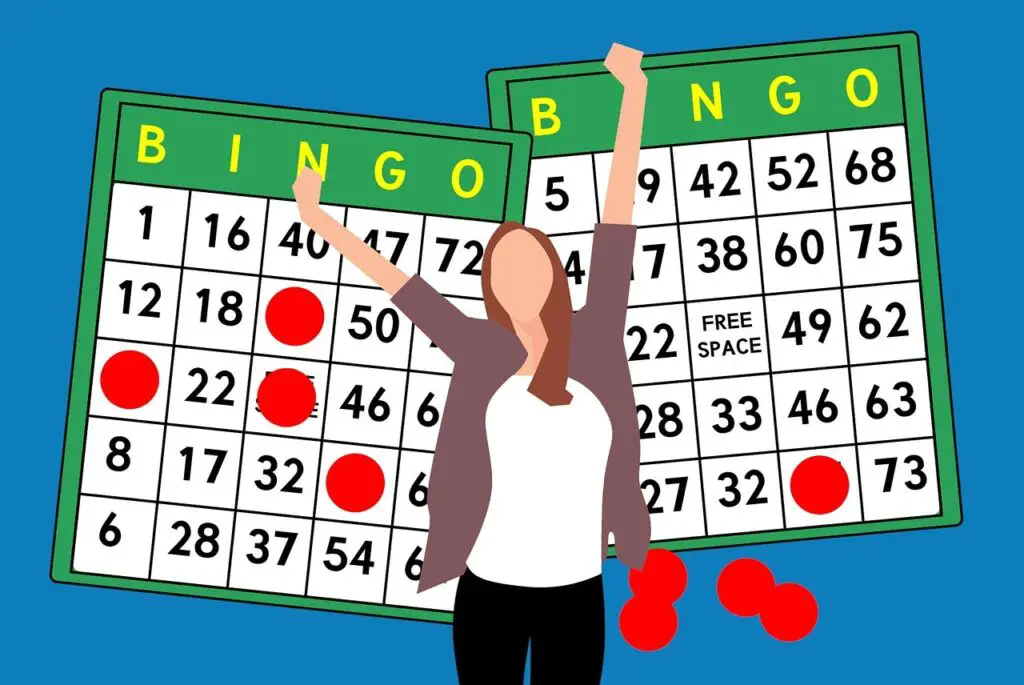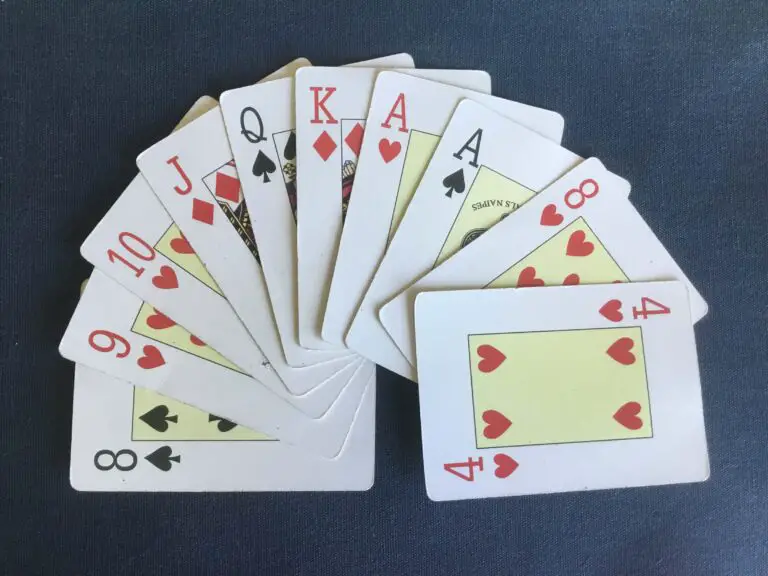EFL/ESL games don’t have to be complicated. In fact, sometimes, the simplest ones are best – you just grab some paper and pens and get started. Who needs lots of special equipment?
The 9 games and activities on this list are great to use as last-minute ideas, or to base a whole class around. They’re flexible and exciting. Without a doubt, your students will want to do them again and again.
And all you need is plenty of sheets of paper, and some standard pens.

If you don’t even have pen and paper, check out my list of 9 EFL/ESL Games With No Materials or Preparation Needed. And on the subject of materials and equipment, find out which 9 Items Every EFL/ESL Teacher Needs for Brilliant Classes.
- Folding stories
- Say and Draw
- Advanced Bingo
- Call My Bluff
- Most Likely
- Written Narrative Telephone
- Paper airplanes
- Two Truths and a Lie
- STOP
Spending your hard-earned money and valuable time getting elaborate resources is a waste of time. That’s why the games in my free ebook of 20 EFL/ESL games have very few resource requirements. You can get the free ebook by signing up to the Enchanted ESL Newsletter.
Not only will you get access to the detailed instructions and guidance on adapting games and resources for all sorts of classes (online, individuals, big groups, etc.) but you’ll get monthly emails with more games, role-play scenarios and lesson plans. All for free!
1. Folding stories
If you want to practice a little writing and let your students be creative, folding stories are a fantastic activity.
Estimated time: 10-15 minutes per round
Energy level: 2/5
English level: Any
You can play this game with 2 or more people, but it works best in groups of 3-6. Avoid using it with really young kids. I wouldn’t do it with students under the age of 7 unless they had a very high level of English.
How to play
Everyone starts with a blank sheet of paper.
First, they should all write “Who:” at the top of the sheet, then the name of a person, celebrity, or fictional character.
Next, they should neatly fold the top of the paper over so it just covers what they’ve written.
Everyone passes their sheet to the player to their left. Without unfolding the paper, they should all now write “Where:” and a location of their choosing. They can be creative. “Paris” is just as reasonable as “in the microwave” or “on the moon”.
Again, fold the paper and pass to the left. The game continues like this with “When”, “What” (the action they were doing), “Why”, and “With who”.
When all the question words have been done, players pass to the left again. Now they unfold the sheet and can take turns reading out the silly stories that have emerged.
TIPS:
- Take part in the game and add some creative ideas.
- Don’t expect all stories to be funny. Some will be hilarious, but others will fall flat or not make any sense at all. That’s part of the randomness.
- Challenge confident students to be more specific. At school is fine, but even better would be under the teacher’s table or on the roof of the gym.
- Alter the question words to focus on particular grammar points. For example, include “How:” after “What” if you’re practicing adverbs.
Folding stories is one of my favourite activities. It features on one of my other lists: 9 EFL/ESL Games and Activities for Intermediate Learners, so go check that out for more ideas.
2. Say and Draw
A super simple activity which people of all ages can enjoy. It also scales to advanced levels with more complexity and speed.
Estimated time: 2 minutes per turn (try to let all students have a turn)
Energy level: 1/5
English level: Any
One student describes a scene. The other students have to listen carefully and draw it as accurately as possible. The first time you do it, model the kind of speed and detail you’re expecting. For example:
First of all, draw a beach with the sea next to it. PAUSE. In the middle of the beach, there’s a palm tree with three coconuts. PAUSE. Under the palm tree, draw three baby turtles and their mum. PAUSE. It’s sunny, with two small clouds in the sky.

For beginner students, you’ll have to use shorter, simpler sentences. The more advanced you get, the more details you can include and the faster you can talk.
When students describe their imaginary scenarios, you may need to prompt them to give information like where to draw something, or how big it should be.
TIPS:
- This is not an art contest. It’s an activity to practice listening, not draw the perfect picture.
- Students might get a bit stressed by the speed of the description. You want them to be in a bit of a rush, but don’t let them get overwhelmed.
- Allow creativity. Turtles on the beach are nice, but hamsters riding unicorn-dragons on the moon will have everyone laughing.
- Make things a little crazy by having students close their eyes while drawing. The results are hilarious.
- Or, play some gentle music and let everyone chill out.
- Avoid letting the describer pick their favourite picture. It ends up as a popularity contest, or players trying too hard to please. Instead, praise students who followed the description best.
Say and Draw is a great option for beginners who are gaining confidence speaking. For more ideas like this, read my list of 9 EFL/ESL Speaking Games & Activities Perfect for Beginners.
3. Advanced Bingo
Bingo is an EFL/ESL favourite thanks to its simple rules and endless re-playability. But don’t settle for basic bingo. Stretch the rules and use it to really boost your students’ learning.
Estimated time: 10 minutes
Energy level: 3/5
English level: Any
You can play with just paper and pens, but if you have the time, print out some 3×3 grids and put them inside an A4 dry-erase pocket to speed things up.
How to play
All players draw a 3×3 grid and write a number in each box. Basic rules use numbers 1-40. See below for advanced variations.
Randomly choose numbers and call them out. If a player has that number on their grid, they check it off.
First person to get mark all 9 of their numbers shouts “bingo!”
Check their numbers. If they’re correct, they win.

- Change the range of numbers. 60-100 works, and you could also do 10, 20, 30… all the way up to 400.
- Use 6 digit numbers like 645,821. Instead of calling out individual numbers, call out a number for a specific place value column. For example, “five thousand”. A player could check off the number 645,821 because it has a 5 in the thousands column, but they couldn’t check off 554,555 because the thousands column has a 4.
- Use vocabulary. Use a brainstorm elicitation activity to get around 40 words on the board. (for more on elicitation, read my article: How to Elicit Vocabulary in EFL/ESL: 7 Effective Activities). Tailor this to the topic you’re learning in class at the moment.
- Let students pick the numbers/words instead of the teacher.
- To make the game longer, use 4×4 grids or even 5×5. With the larger grids, you can reward rows and columns, too.
4. Call My Bluff
Call My Bluff is a classic UK quiz show which you can adapt to your classroom to challenge your students’ English and deception abilities. Click here to watch an episode of the show on YouTube.
Estimated time: 5 minutes per round
Energy level: 2/5
English level: Advanced (can be used with mature intermediate students)
You may have to do a bit of preparation to think up some obscure words your students definitely won’t know. But if you feel confident, you can come up with words on the fly.
Below are the rules in written form, but I recommend you check out this video I made on how to play.
How to play
Divide the class into teams. For classes with fewer than 10, have two teams face off. With classes of 10 or more, split them up 4 or even 6 teams and have teams play head to head in separate contests.
Give each team a piece of paper showing an unusual word and its definition. Each team should get a different word. Make sure they’re words that your students wouldn’t know. For example, “to chortle” with the definition “to laugh in a noisy, happy way”.
Give teams a couple of minutes to write two more definitions for the word – the bluffs. For “to chortle” they might think of “to eat so fast you get sick” and “to walk with confidence”.
Now, they read the definitions to the other team. The other team has to identify the correct definition, getting a point if they do so. If the bluffers trick the team into choosing a wrong definition, they get a point.
TIPS
- Encourage teams to make their bluffs seem plausible. If there are obvious mistakes in the definition or they don’t make sense, the other team will see through the bluff.
- Make sure the words aren’t similar in their native tongue, especially if they speak Germanic or Latin based languages.
- Short words are just as useful as long words, if not better. Slurp, eaves and trike are some great examples.
I made a big list of words and definitions you can use in Call My Bluff. And it’s free! All you need to do is sign up to the Enchanted ESL Monthly Newsletter and you’ll get to my free resources for subscribers (it’s packed full of other fantastic games and activities, too!)
5. Most Likely
This is a fun game that works best with people who know each other quite well and are mature enough to justify their opinions respectfully. It’s best in groups of 5-10.
Estimated time: 10-30 minutes per round
Energy level: 3/5
English level: Intermediate & Advanced
How to play
Ask the class a question which begins “Who is most likely to…”
For example, “Who is most likely to become a famous singer?“
Everyone secretly writes who in the group they think is most likely. When everyone is ready, share your answers together and determine who got the most votes.
Chat about why people voted the way they did.

TIPS:
- Encourage students to create “most likely” questions.
- Keep things clean and respectful. If you sense things are getting personal and students are looking uncomfortable, stop the game before things get out of control.
- This isn’t a competitive game. There’s no prize for getting the most votes – it’s just a fun way to provoke some conversation.
6. Written Narrative Telephone
This is a variation of the spoken Narrative Telephone game, which I discovered thanks to Critical Role. You can check out how to play the spoken version in this video:
Estimated time: 45-60 minutes
Energy level: 2/5
English level: Intermediate & Advanced
You need at least 4 students in the class to play this game.
How to play
Choose one player as the storyteller. The first time playing, it’s usually best for the teacher to be the storyteller. They write a short story (2-3 paragraphs, or fewer for less confident students).
Pass the story to another student. Give them 2 minutes to read it. After two minutes, take the story away. They now have to rewrite the story as best they can in under five minutes.
When the time is up, they should pass their story to the next student. They repeat the process, reading, then rewriting the story from memory.
After 5 or 6 turns (or until the story has been around everyone), stop and read the final story out loud. See how much it has changed!
I strongly recommend a variation of these rules where everyone is a storyteller. They all write an original story, then pass it round a circle. This way everyone is always busy.
TIPS:
- If students are finding it easy, reduce the time limits. Or, if it’s too hard, give them an extra minute.
- Don’t make people feel bad about missing out parts of the story. That’s part of the fun.
- Encourage students to fill their initial stories with lots of information and specific details.
- Collect all the stories at the end – you can share them with your students and laugh at the changes over time each repetition. You can also identify strengths and weaknesses in your students’ writing abilities.
Written Narrative Telephone is great for making writing fun. For more ideas to get your students enjoying writing in English, head to my list of 9 Exciting EFL/ESL Activities for Writing & Spelling.
7. Paper airplanes
If you’ve got a big pile of scrap paper, making paper airplanes is a great way to reuse it. This activity is best with kids, but teens and adults can definitely enjoy it, too.
Estimated time: 10 minutes or longer
Energy level: 4/5
English level: Any
Here’s a great video explaining how to make a simple model, and then going over the science behind its aerodynamics.
Make sure this activity doesn’t just become a classroom full of students throwing airplanes and not learning anything. To avoid this:
- Treat the instructions like a listening exercise.
- Have groups modify and improve the design to see if they can make it fly better.
- Set up a flight zone and measure how far airplanes go, using English measurements.
Arts and crafts are a great way to vary your English lessons. But they’re easy to get wrong. To find out how to best use them in your lessons, and get lots of amazing ideas, check out my article: How to Use Arts and Crafts in EFL/ESL + 7 easy activities.
8. Two Truths and a Lie
A great game for students to get to know each other, while practicing the arts of persuasion and deception in English.
Estimated time: 10-15 minutes per round
Energy level: 2/5
English level: Intermediate and Advanced (you may be able to play with more confident, mature beginners)
The game works best with groups of 5-8.
How to play
All players write three sentences about themselves. Two are true, and one is a lie.
In turn, they read their sentences to the other players who have to pick the one they think is false.
Players who pick the lie get one point. For every player who chose incorrectly, the writer gets a point.
Play goes on until all the players have revealed their sentences and the lies picked out. Whoever got the most points wins.
TIPS:
- Tell students to keep it light and not include information that is overly personal.
- Encourage creative sentences.
- Join in yourself! Students will enjoy getting to know you, and you can introduce some sentences and structures they might not have thought of.
- To vary the game, have students write 2 truths and a lie about things that aren’t personal, but might be little-known facts, or urban myths.

9. STOP
A lot of EFL/ESL teachers will know this game. It’s great to throw in at the end of a lesson, and once students know how it works, it doesn’t take long to set up.
Estimated time: 5 minutes per round
Energy level: 3/5
English level: Any (except for absolute beginners)
How to play
Put students into 4 to 6 groups (students can play as individuals in small classes).
Decide on 6 categories, e.g. sports, food, body parts, etc. Groups should create 6 columns with the categories as the title.
Choose a letter. To do this, say the alphabet quickly in your head and get one of your students shout STOP! Use the letter you’d reached in your head. Or just pick a letter you think would be a good challenge.
If you have a timer, set it for 3 minutes. If not, try to keep a rough track of time.
Say “GO”. The groups must write down a word beginning with the chosen letter for each category.
At the end of the 3 minutes, shout “STOP!” and everyone must stop writing. OR, when a group has filled every category, they can shout “STOP!”
Groups pass their sheets to another team for marking. Have the groups read out the answers, taking each category in turn.
When all the answers have been read out, do the scoring. Award 1 point for each correct unique word (that no other groups wrote) and half a point for correct words which were repeated by another group. Total the points from each category. The team with the most points wins.
The best strategy is to think of unusual words. If the letter is “B” and the category is “sports”, writing “basketball” isn’t the best option. Others will choose it, too. “Biathlon” or “billiards” both have a good chance of scoring full points.
TIPS:
- If the letter is something like X or Q, choose a different one. J, Z and W might be too hard for lower-level groups.
- Challenge confident students with subcategories. Instead of “food”, choose “dairy products”.
Scattergories variation
Scattergories is a very similar game to STOP. The rules are identical, except instead of writing just ONE word for each category, players try to write as many as they can. Unique answers still earn 1 point, while answers repeated by other groups earn half. You may want to extend the time limit to play this.
STOP and Scattergories are classic vocab-games. For more games that review vocabulary in an engaging way, head to my list of 9 High Energy EFL/ESL Games for Boosting Vocabulary.
Tailor games and activities to your class
I hope the 9 entries on this list give you inspiration to make your EFL/ESL classes great, even if you don’t have lots of fancy equipment available.
A great teacher doesn’t rely on elaborate materials and flashy gadgets. They use their creativity and innovation to work with what they’ve got, adapting and re-designing to suit the needs of their specific group. So take these ideas, make them your own, and make your classes the best they can be!
For 20 more EFL/ESL games that don’t need expensive resources, get my free ebook by signing up to the Enchanted ESL Newsletter. You’ll also get exclusive access to a whole load of other free resources as well as monthly emails with lesson plans, role-play scenarios and even more games!
If you’re looking for more games and activities, check out my other lists:
9 EFL/ESL Speaking Games & Activities Perfect for Beginners
9 EFL/ESL Games & Activities for Intermediate Learners
9 EFL/ESL Games and Activities for Advanced Learners
9 High Energy EFL/ESL Games for Boosting Vocabulary
9 Engaging Homework Ideas for EFL/ESL: No worksheets!
9 Exciting EFL/ESL Activities for Writing & Spelling
9 Fun EFL/ESL Games & Ideas With Standard Playing Cards
9 EFL/ESL Games With No Materials or Preparation Needed
9 EFL/ESL 5 Minute Games Every Teacher Needs to Know
9 Superb EFL/ESL Games & Activities Using Just Pen & Paper
9 Classy EFL/ESL Games & Activities for Adults (+ tips)
9 Confidence-Boosting EFL/ESL Speaking Games for All Levels
9 Exciting Flashcard Games for EFL/ESL Classes








